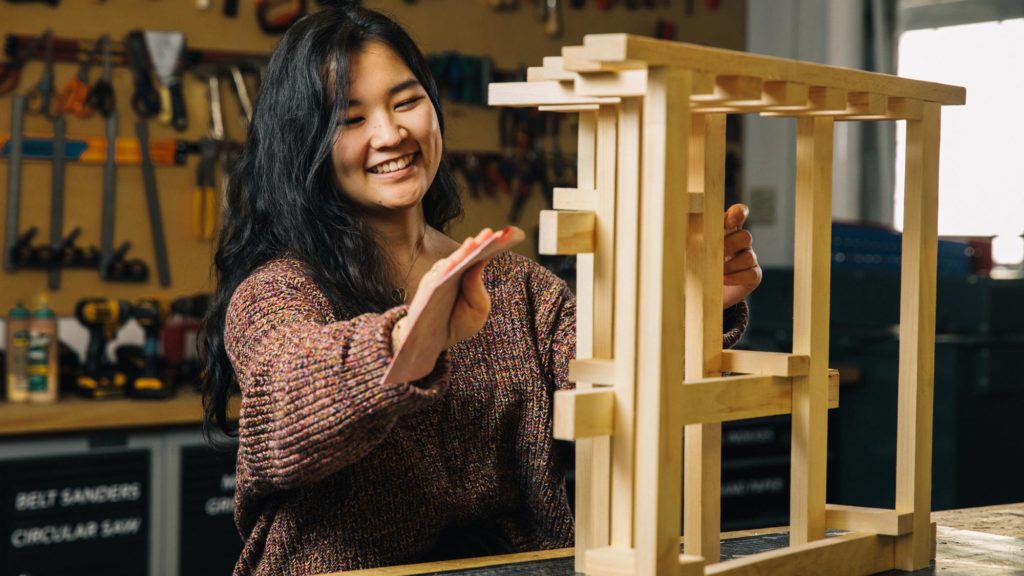Ibuki Iwasaki came to MIT without a clear idea of what she wanted to major in, but that changed during the spring of her first year, when she left her comfort zone and enrolled in 4.02A .
It also introduced her to the role that technology can play in design, whether through coding, processing components to analyze how they might fit with each other, or using programs to assess functionality or success of a model.
Now a senior, Iwasaki double majors in art and design, in the Department of Architecture, and in computation and cognition, in the Department of Electrical Engineering and Computer Science, finding creative ways to develop technology that prioritizes individuals and how they think.
Later, she also joined the Burchard Scholars Program, a series of dinners with professors from the School of Humanities, Arts, and Social Sciences, to learn more about the humanities experience at MIT.
Tasked with looking at the visual design of social media and its effects on the user, she considered how the layout of the app was shaped by how someone might interact with the platform.
Iwasaki focused on a project involving a platform that allows citizens affected by natural disasters, as well as emergency responders, to communicate information with each other in real time.
She also worked on a machine-learning component, which analyzed reports from specific areas and processing them in a way that was easy for users to understand, ultimately giving emergency responders more time to react.
While Iwasaki had long been intrigued by the aesthetic side of design, the ethics class and the following research project led to a new interest in functionality and a desire to learn more about cognition and behavior to better inform her designs.
She was particularly interested in studying “loophole behavior.” For example, if a parent tells their child they don’t want anything on the floor, the child, instead of picking up their belongings, might pile them on their bed, so there is technically nothing on the floor.
Working with children and studying how they learn also largely influenced Iwasaki’s senior thesis topic, where she is looking at how technology is used for education purposes, focusing on augmented reality and how it can be better implemented to enhance learning.
Iwasaki is also committed to helping other students navigate their MIT experience, as she is an associate advisor to first-year students through MIT’s Office of the First Year.
